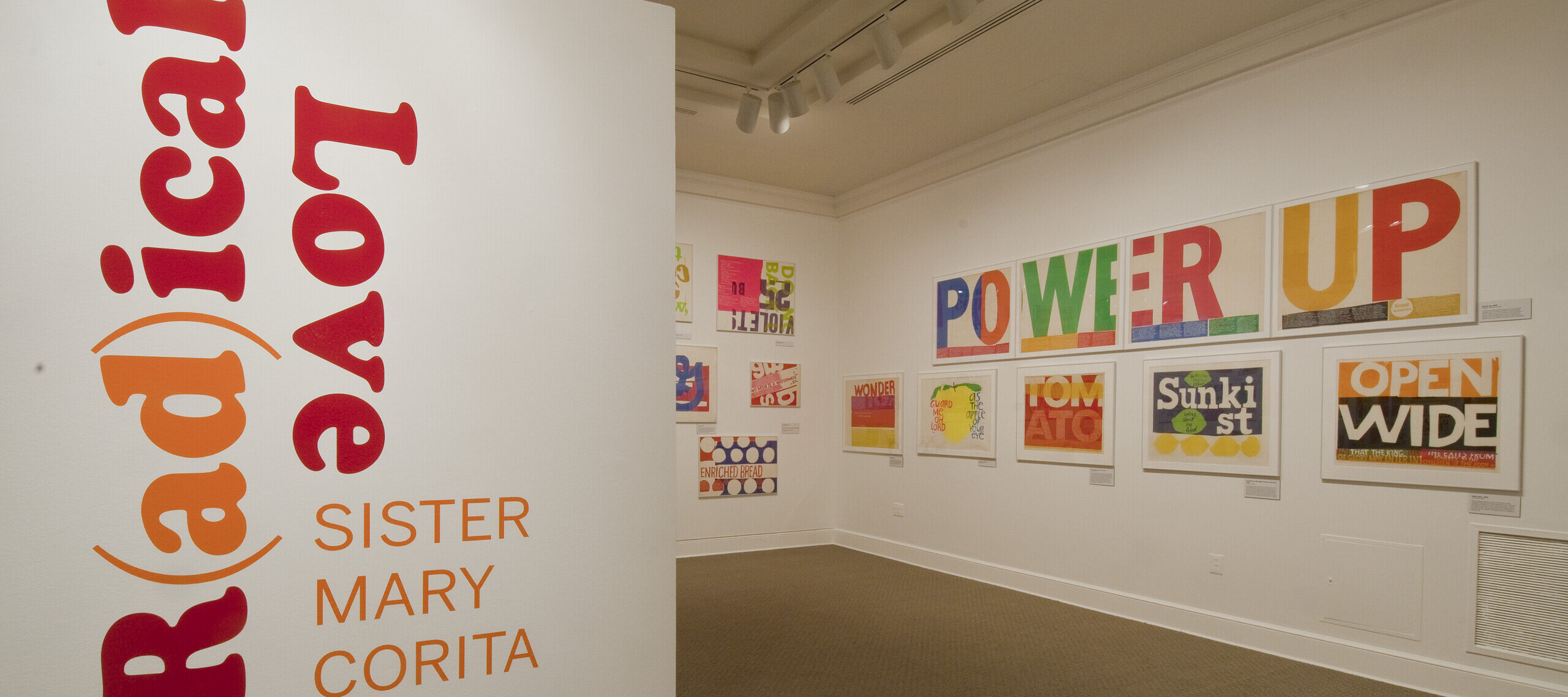
The National Museum of Women in the Arts is getting groovy this spring with the opening of R(ad)ical Love: Sister Mary Corita. The exhibition features 65 never-before-exhibited prints created between 1963 and 1967 by nun, artist, and social activist Sister Mary Corita (later Corita Kent, 1918–1986).
The exhibition showcases Corita’s unique brand of pop art, synthesizing the spiritual with the commonplace. Incorporating designs from print ads, street signs, billboards and product packaging, she adapted mainstream advertisements and transformed them into positive messages about love and social righteousness.

Corita, a member of the Roman Catholic order of the Sisters of the Immaculate Heart of Mary, was professor of art at the Immaculate Heart College (IHC) in Los Angeles, where she taught for more than 20 years, leading the art department for four. Beginning in the 1950s, IHC was known for its progressive attitudes and innovative art department. The college’s liberal practices took on a new life in 1962 with the second Vatican Council’s call for renewal, which sought to modernize religious teachings and make them accessible to contemporary Catholics. This shift in the Church brought rise to the “modern nun,” exemplified by the life and work of Corita and her religious community.
The 1964 print the juiciest tomato of them all exemplifies Corita’s positive, albeit controversial, message of peace and love. At the 1964 Mary’s Day celebration at IHC, Corita and her students spread awareness of world hunger by decorating the event with Corita’s pop-art prints. This demonstration of art activism inspired writer and professor Samuel Eisenstein to send a letter to Corita about her use of food-related advertising imagery. In her print, Corita quotes Eisenstein’s letter: “if a canned food company feels justified in saying their tomatoes are the juiciest, it is not desecration to say, ‘Mother Mary is the juiciest tomato of them all.’” This underscores Corita’s critique of the overblown language used in advertising, while simultaneously promoting her spiritual philosophy. Despite Corita’s embrace of religion in this work, church officials felt that that it was too flippant and censored the print from being publicly exhibited.

Above all, Sister Mary Corita’s artwork speaks of sincere optimism and hope. Each print exudes Corita’s love for humanity and is embedded with references to protecting and spreading that love. In Corita’s words:
“If we separate ourselves from the great arts of our time, we cannot be leaven enriching our society from within. We may well be peripheral to our society, unaware of its pains and joys, unable to communicate with it, to benefit from it or to help it. We will be refusing to care about the fight to free man that James Baldwin speaks of: ‘The war of an artist with his society is a lover’s war. And he does at his best, what lovers do, which is to reveal the beloved to himself, and with that revelation, make freedom real.”
R(ad)ical Love: Sister Mary Corita is on view March 9–July 15, 2012. NMWA welcomes teenagers on Saturday, April 21, 2012, 10 a.m.–1 p.m., for a Role Model Workshop, “The Power of Multiples.” Amelia Hankin, American University’s printmaker-in-residence, leads participants through the fundamentals of monoprinting. Teens will learn how printmaking is used in visual communication while creating their own personally designed multiples. For more information, visit www.nmwa.org.
